Coronavirus: An Update; by the Numbers
Significant Pandemic Developments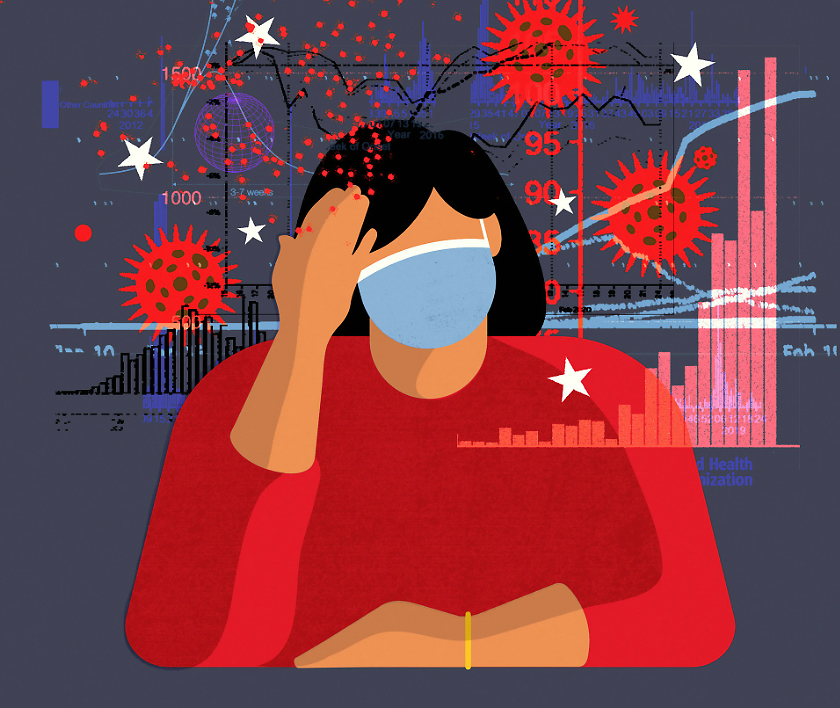
US surpasses landmark of 20 million coronavirus cases on New Year’s Day
US has almost twice as many confirmed coronavirus cases as the next worst-hit country, India, and almost 350,000 have died as hospitals, undertakers, vaccine administrators and ordinary families struggled across the nation.
- More than 10,000 Americans died in the last three days of 2020 as the year finished with the pandemic, which has never been under control in the US since the start of the outbreak last January, breaking all the wrong world records.
- The US has almost twice as many confirmed coronavirus cases as the next worst-hit country, India. The south Asian nation has 10.2m cases among a population of 1.3 billion, whereas the US on Friday reached 20m infections with a population of 328m.
- Almost 350,000 Americans have died because of Covid-19, according to the coronavirus resource center at Johns Hopkins University, by far the world’s highest death toll. The country with the second most fatalities is Brazil, where 195,000 people have died from coronavirus.
- California, whose second wave of infections this autumn and winter has proved to be a sickness tsunami, morgues in some places are overflowing and undertakers are turning away grieving families, the Los Angeles Times reported.
Hawaii ends 2020 with a daily record of new COVID-19 cases and three more deaths
Health officials reported 188 new COVID-19 cases statewide on Thursday, including 135 on Oahu, 27 in Maui County, 14 on the Big Island and 12 residents who were diagnosed out of the state. There were three new fatalities reported but no details.
- To date, 21,397 people in Hawaii have been diagnosed with COVID-19, including 1,619 in the past two weeks.
- As of Wednesday, 60% of the state’s 338 available ICU hospital beds were in use, including 17 COVID-19 patients.
- There have been four virus clusters connected to church activities in December. Two of the clusters are still being investigated by the state’s contact tracers and have been linked to at least 50 cases.
- Roughly 15% of cases diagnosed in December were associated with travel, with the bulk of cases in Hawaii being spread in the community.
- The official state death toll from the virus is 288. Civil Beat calculates at least 293 people have died from the disease in Hawaii, including five deaths on Hawaii island that are still pending medical verification by the state.
The US passed 20 million cases and a record number of deaths more than 3,800 in a single day to conclude 2020..
- U.S. Coronavirus Cases: 20,445,654
- U.S. Deaths: 354,215
- Recovered: 12,125,806
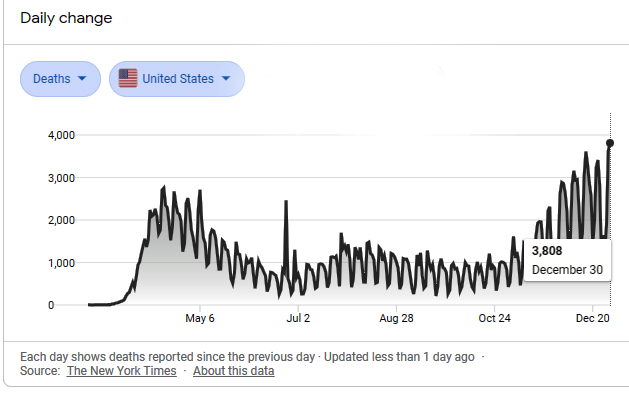
The Federal Government’s vaccine distribution program; Operation Wrap Speed, slows to Impulse
Federal supply chain questions concerning a scheduled 30 – 40 % reduction in the second round vaccine distribution to the states remains unanswered.
Manufacturer Pfizer claims vaccines are ready for shipment which sows confusion within the Federal response.
Bloomberg reported, Pfizer said it is having no issues producing or delivering its vaccine, however, confusion over how many doses will be available has built up in recent days.
The U.S.’s original order for 100 million doses initially called for 20 million a month beginning in November. But shipments only began arriving in December, and Pfizer isn’t giving the U.S. its November allotment right away, according to the senior administration official. Instead of doubling December’s shipment to catch up, Pfizer is spreading the 20 million that was due in November over the first four months of 2021, the official said.
Pfizer has so far allocated about 10.4 million doses to the U.S., the official said. From the first tranche of 6.4 million, 500,000 doses were set aside as a reserve and 2.9 million were shipped out this week. The remaining 2.9 million will be sent in three weeks as the second dose of the vaccine’s two-shot regimen. The U.S. will begin delivering a second allocation of 4 million doses next week, again sending out half while holding back half for second doses.
The rapid-fire distribution of millions of doses challenges states
Many states have asked for more time between rounds to determine where to send them. Additionally, the U.S. won’t promise states shipments until the supply has been confirmed by Pfizer. That has stretched timelines, sowed confusion within an allocation process spanning Tuesday to Friday. Distribution of the vaccine is grinding forward over the weekend, and deliveries are expected to begin the following Monday, an administration official said.
FDA grants emergency-use approval for the Pfizer-BioNTech, and Moderna vaccine passes panel recommendation, now awaits FDA green light to proceed
The harrowing milestone comes as two vaccine candidates have cleared FDA regulatory hurdle and began shipping to all 50 states on Sunday.
Moderna Vaccine
The coronavirus vaccine made by Moderna is highly protective, according to new data released on Tuesday, setting the stage for its emergency authorization this week by federal regulators and the start of its distribution across the country.
The data included in a review by the F.D.A. confirms Moderna’s earlier assessment that its vaccine had an efficacy rate of 94.1 percent in a trial of 30,000 people. Side effects, including fever, headache and fatigue, were unpleasant but not dangerous, the agency found.
The Food and Drug Administration intends to authorize use of the vaccine on Friday, people familiar with the agency’s plans said. The decision would give millions of Americans access to a second coronavirus vaccine beginning as early as Monday.
Distribution of about six million doses could then begin next week, significantly adding to the millions of doses already being shipped by Pfizer and BioNTech, the companies that developed the first coronavirus vaccine given emergency clearance just last Friday.
~~~~~~~~~~~~~~~~~~~~~~~~~~~~~~~~~~~~~~~~~~~~~~~~~~
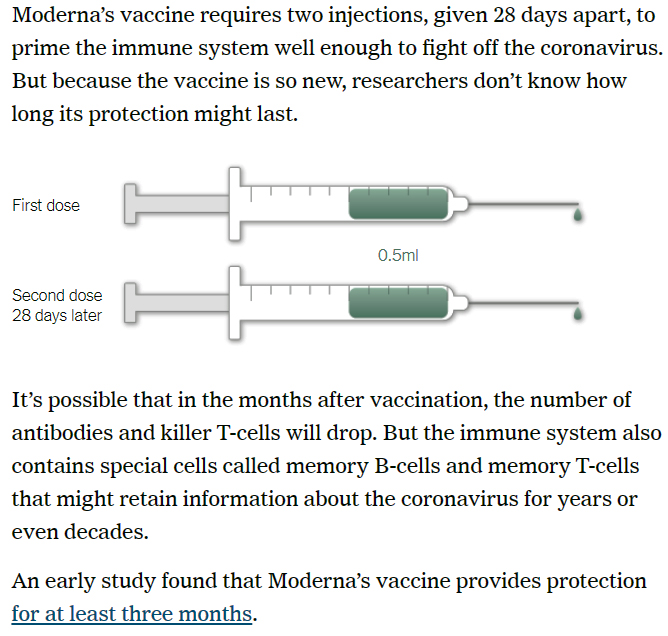
Pfizer-BioTech Vaccine
Late Friday, the FDA granted emergency use approval for the Pfizer and BioNTech coronavirus vaccine. That followed an advisory panel backed the Pfizer vaccine Thursday evening.
The first coronavirus vaccine shipments have left Pfizer as of Saturday morning. They should arrive at destinations on Monday-Wednesday for vaccinations.
The CDC has recommended giving priority to health-care workers and nursing homes, but states can distribute the coronavirus vaccine as they see fit…
The first doses of the Pfizer-BioNTech vaccine left a facility in Michigan early Sunday, with UPS and FedEx teaming up to ship them to all 50 states for distribution. The first of nearly three million doses of the first Covid-19 vaccine were packed in dry ice and put on trucks at a Pfizer plant in Kalamazoo, Mich., on Sunday morning, destined for hundreds of distribution centers, the most ambitious vaccination campaign in American history.
Hawaii and most other states are largely planning to follow C.D.C. recommendations about who gets vaccinated first: health care workers at high risk of exposure and residents of nursing homes and other long-term care facilities, a population that has died from the virus at disproportionately high rates.
U.S. records 3,293 deaths in a single day, total US Covid-19 deaths reach 318,522 – both new highs
According to the Worldometer data tracker, the cumulative number of confirmed coronavirus cases in the U.S. topped 16.7 million on Monday. Total virus-related deaths rose past 306,000.
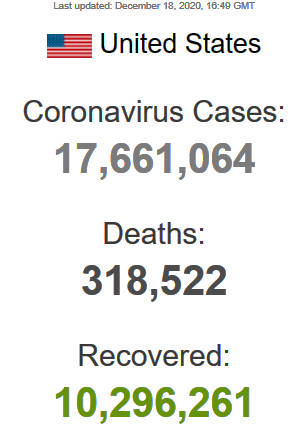 The cumulative total of worldwide Covid-19 cases confirmed since the start of the outbreak topped 72.7 million Monday, with more than 1.62 million virus-related deaths.
The cumulative total of worldwide Covid-19 cases confirmed since the start of the outbreak topped 72.7 million Monday, with more than 1.62 million virus-related deaths.
After weeks of surging infections and rising levels of virus hospitalizations, the United States recorded more than 3,000 covid-19 deaths in a single day, a pandemic record.
Yet the new death record, as well as a new high of more than 106,000 covid-19 patients in hospitals, are grim reminders of the pandemic’s devastating toll.
The coronavirus will kill more people in the United States every day for the next two to three months than died in the attacks on Sept. 11, 2001, or Pearl Harbor, Centers for Disease Control and Prevention Director Robert Redfield said Thursday.
It took 2½ months for the virus to claim its first 50,000 Americans, then just one month for the death toll to climb to 100,000. The pace of death eased somewhat with warmer weather and more-concerted efforts to encourage mask use. But with the arrival of autumn and the holiday season, the virus surged anew in California, Texas and the South, and then in the Plains and the Midwest.
Few safe havens remain. Some consider Hawaii’s lower case count as one example of them.
Between late September and mid-November, the death tally climbed from 200,000 to 250,000. Now it has nearly reached the 300,000 marker in less than half that time — even though treatment of the most severe cases has improved.
Latest Hawaii State Pandemic Data
Hawaii Re-Opens Amid National Pandemic Surge
The state has reopened to tourism and allowed incoming travelers from out of state who have tested negative for the coronavirus to avoid quarantine as of Nov. first. Gov. David Ige previously acknowledged that the state’s partners in a COVID-19 testing program for trans-Pacific travelers won’t test children younger than 12. Ige said untested children of families who arrive in Hawaii will be subject to a 14-day quarantine, even if their parents arrive with a negative test.
Ige said he’s not ready to lift the 14-day interisland travel quarantine. However, the state’s so-called quarantine measures are limited by totally inadequate testing and enforcement resources. Beyond a few Oahu hotels working with DOH, it’s strictly an honor system, and people don’t fly to Hawaii for vacation only to stay inside their rooms for two weeks.
Right Time to Reboot Tourism?
Hawaii appears ready to fall into the same pattern seen elsewhere around the world, but with one significant difference. As we open up for business during the middle of a global pandemic, cases and deaths will skyrocket, but unlike the mainland, Hawaii’s woefully lacking medical infrastructure will collapse under the weight of escalating hospitalizations — worst yet, the state’s population living on outer islands will be hardest hit, already facing a chronic shortage of doctors and inadequate medical care.
US Economy Hammered by Pandemic
- Treasury secretary, Steven Mnuchin, was rebuked on Thursday at a congressional oversight hearing over his management of the economic relief effort
- Mnuchin is facing criticism from lawmakers over his decision to pull the plug on five of the Federal Reserve’s emergency lending programs
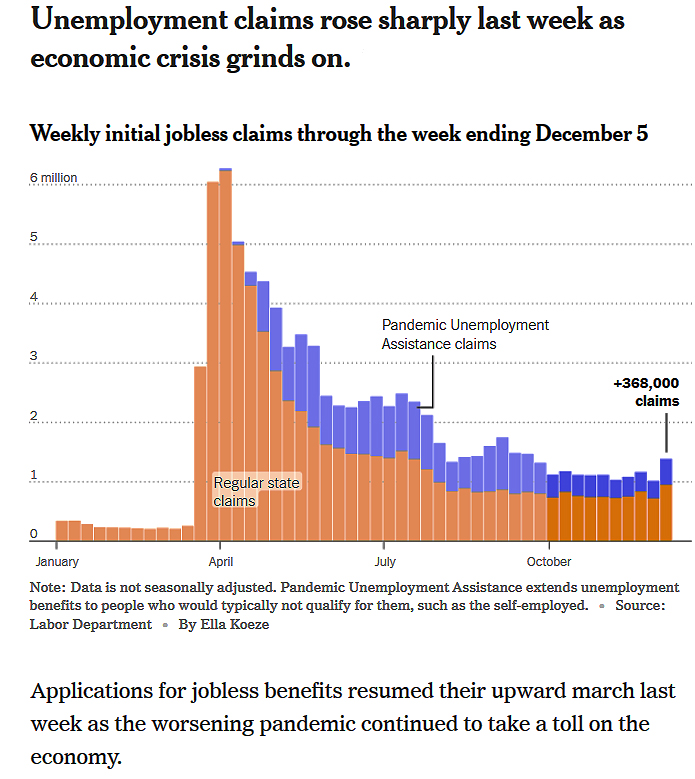
- Scrutiny of Mr. Mnuchin’s handling of the programs comes as he is negotiating with Congress over another $900 billion economic relief bill that lawmakers hope to pass before the end of the year
…………………………………………………………………………………………
Trump Administration Plays Politics with Americans’ Livelihoods
“This was a political decision — one intended to hamstring the incoming administration even as Covid deaths are spiking and the economic recovery is slowing,” Bharat Ramamurti, an appointed member of the Congressional Oversight Commission, said at Thursday’s hearing. “Let me put it this way: Does anyone think the Treasury would have ended these programs if Donald Trump were re-elected?”
The monthly jobs report released on Friday showed that hiring slowed sharply in early November and that some of the sectors most exposed to the pandemic, like restaurants and retailers, cut jobs for the first time since the spring.
More up-to-date data from private sources suggests that the slowdown has continued or deepened since the November survey was conducted.
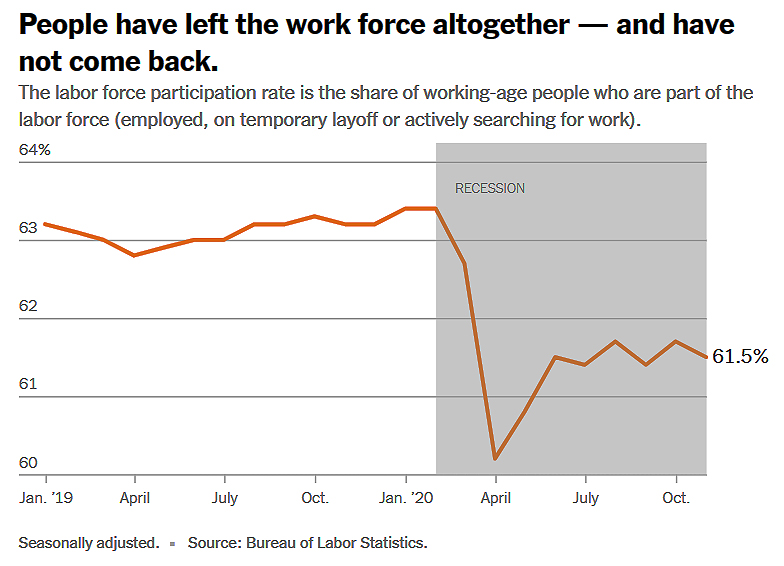
More than four million people left the work force entirely from February to November, meaning they are neither working nor actively seeking a job. (To be counted as unemployed, a person must have looked for a job in the last four weeks or be on a temporary layoff.)
Several of the economists we spoke to mentioned the dip in labor force participation as a cause for concern — and a factor that can contribute to a falling unemployment rate, without people actually finding work.
Nearly a year after the coronavirus outbreak, the full impact of the pandemic on the U.S. economy remains unclear. Some of the most obvious indicators are in conflict: As some companies report enormous profits, nearly 10 million more Americans are now unemployed compared with last February, and over one million filed new state and federal unemployment claims last week.
Are we still in the early stages of a long recession, or will the rollout of vaccines mean we’ll soon see the end of a short-term crisis? How much are people suffering now, and for how long will the effects of the past 10 months persist?
Only time will tell …
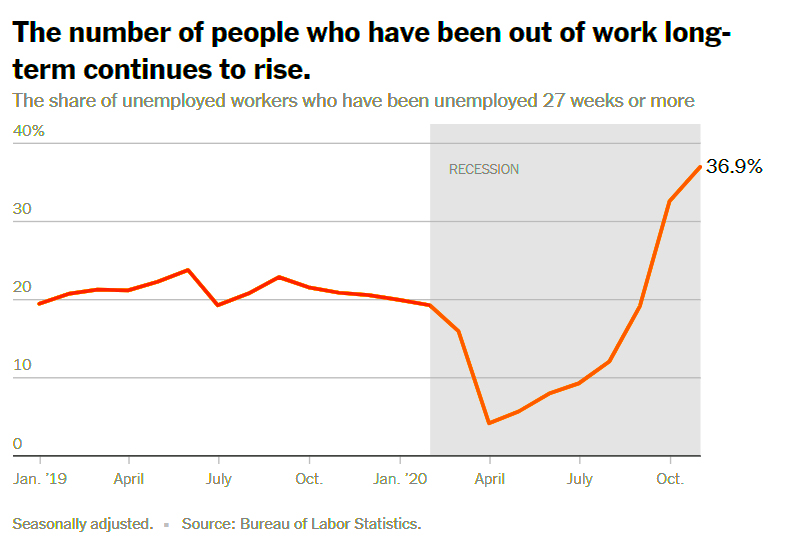
US Hospitals stretched beyond means
US suffers one Covid death every 30 seconds, while global cases now exceed 65 million.
In the US, on average 3,000 Americans are dying each day from COVID-19 exposure, according to Johns Hopkins University – one American death every 30 seconds.
With hospitals slammed by covid-19, doctors and nurses plead for action by governors.
- With few options left, overwhelmed doctors and other caregivers are appealing directly to governors for relief from the staggering increases in hospitalized covid-19 patients as the virus surges across the country. Without a new relief package from Washington, governors have adopted a variety of approaches to grapple with the runaway virus while trying to keep parts of their economies alive. That includes allowing some businesses, such as restaurants and gyms, to remain open with limited capacity and other restrictions.
Staffing in U.S. hospitals, particularly among nurses, has reflected a patchwork of local shortages in recent years, with a ready reserve of traveling and per-diem personnel deployed in response to sudden demand — a flu outbreak here, a hurricane there, a strike elsewhere.
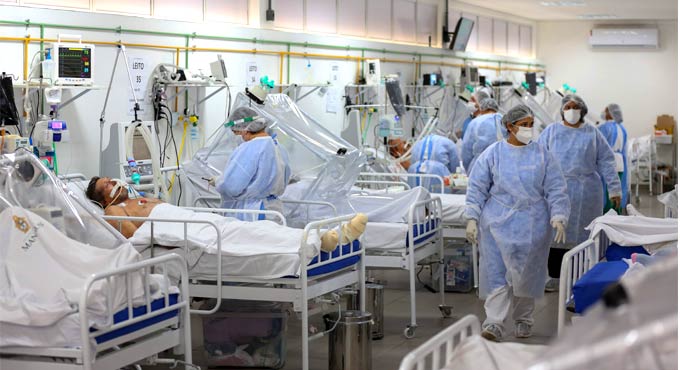
In this fall surge of infections, supplies and equipment for patients and protective gear for health-care workers are not as scarce as they were early in the pandemic, though sporadic shortages still exist, especially in some rural areas.
Last year, a little more than 47,000 registered nurses worked temporary jobs, and 17,000 licensed practical nurses did the same, according to the U.S. Bureau of Labor Statistics. That is a small fraction of the 3.7 million nurses from both categories who were employed last year.
The health-care system last year spent $6.1 billion on travel nurses, a figure that will rise by at least 10 percent this year, said Barry Asin, president of Staffing Industry Analysts, a research firm that specializes in health-care staffing. While covid-related hiring of supplemental health-care workers is skyrocketing, employment of other health-care workers is down sharply because of the cancellation of elective procedures and other care, Asin said.
There is little independent research on the impact temporary nurses have on the quality of care. A 2012 study of a single hospital found they had neither a positive nor negative effect on patient outcomes.
Only one state, California, mandates staff-to-patient ratios. Standards are written into some union contracts. But in many places, it is up to nurses to speak up when they feel conditions are unsafe, which can endanger their jobs, said Jean Ross, co-president of National Nurses United, a nurses labor union.
“We are just completely overrun,” said Rachel Heintz, who works in the emergency department at CHI St. Alexius with McKamey. Both are stewards for the labor union.
Hospital President Kurt R. Schley said there are vacancies in the emergency department and acknowledged that the surge has created “an additional strain to a well-recognized nursing shortage in our community and the region.”
The United States has now suffered 19% of the world’s deaths from Covid-19, despite accounting for only 4% of the world’s population.

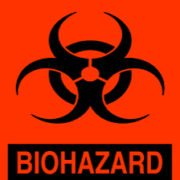
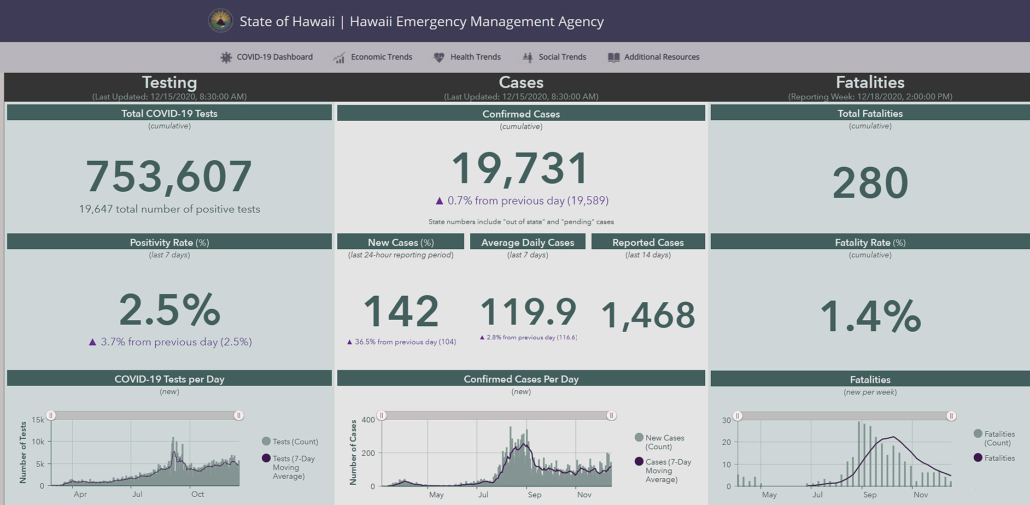
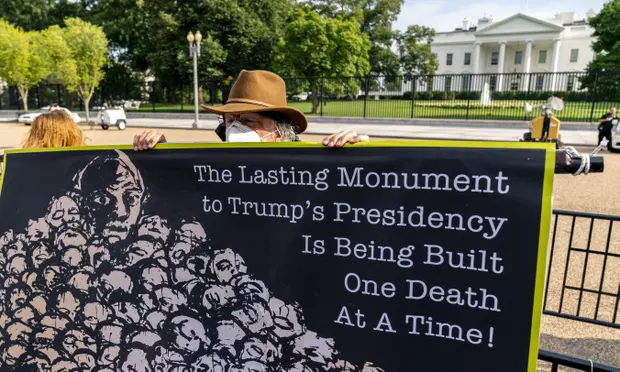


These are subjects everyone should be informed about…
Notice how CDC has no advice about taking natural remedies?
No advice about protecting your immune system?
And what about those who have recovered from it? No news either!.
Good round up of timely data. Very much appreciated! Thanks